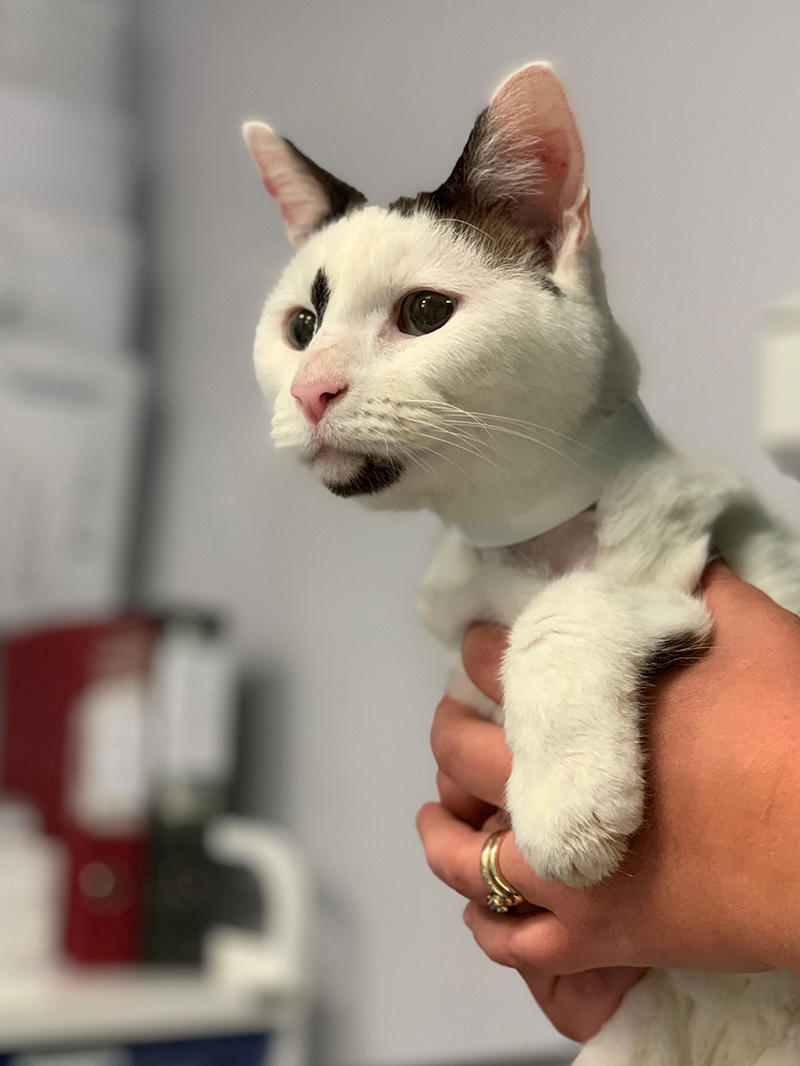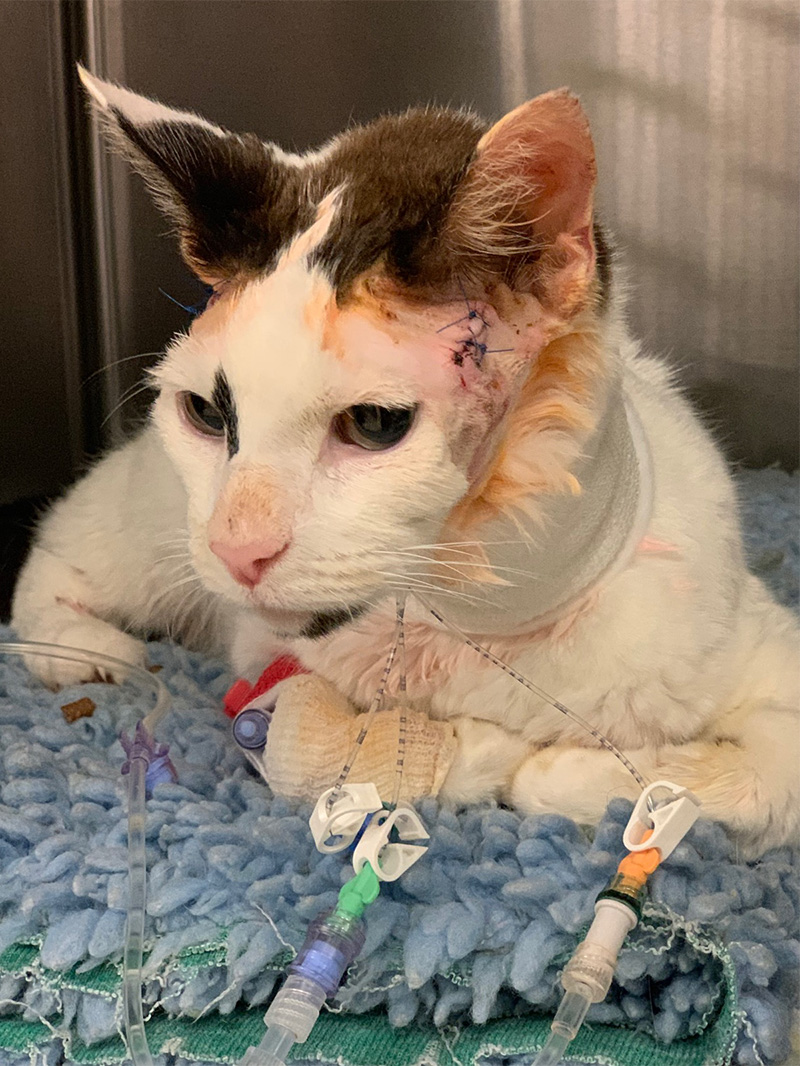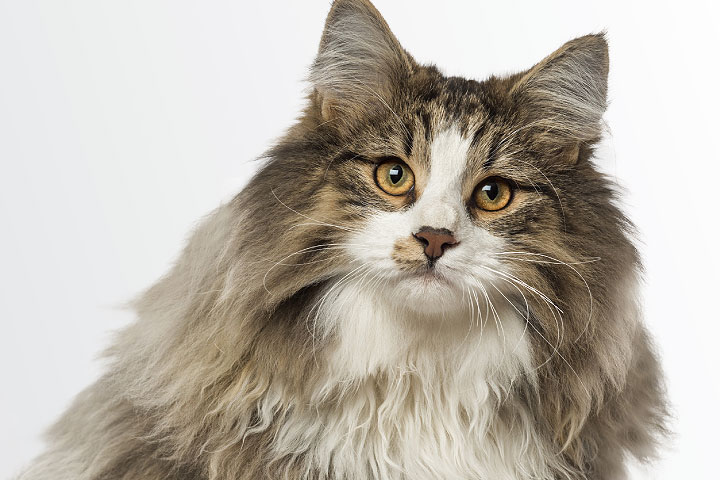acromegaly in cats uk
Most patients are insulin resistant although this may not be the initial presenting sign. Acromegaly is most commonly seen in older 10 years old neutered male cats.

Acromegaly In Cats The Veterinary Nurse
The average cat survived 25 months after SRT meaning that half of the cats lived a longer time and half lived a shorter time.

. Definitive diagnosis can be difficult because of the gradual disease onset subtle clinical signs unavailability of. Net weight gain of lean body mass in cats with uncontrolled diabetes mellitus is a key sign of. Acromegaly refers to a clinical syndrome as a result of the hypersomatotropism which includes the physical changes which occur in the patient when exposed to the excess GH over a longer period of time.
It is more common in certain breeds than others but this disease is generally quite uncommon. The disease has been known in humans for at least 100 years and has been identified in cats starting in the 1980s. The estimated prevalence of acromegaly in cats in the uk is between 1 in 800 to 1 in 1000.
Acromegaly is a relatively rare hormonal condition. Just like the normal non-acromegalic diabetic cat the acromegalic diabetic cat tends to be a middle-aged to older male neutered domestic short hair. Feline acromegaly occurs in older cats 814 years old and appears to be more common in malesClinical signs of uncontrolled diabetes mellitus are often the first sign of acromegaly in cats.
In most studies at least 23 cats had improved symptoms and 50-92 had improved control of their diabetes. Acromegaly or hypersomatotropism is a disease that derives its name from two Greek words. Acromegaly in cats is a condition in cats caused by excessive growth hormone in the body which is usually secondary to a pituitary tumor explains Dr.
Acromegaly in cats is a condition in cats caused by excessive growth hormone in the body which is usually secondary to a pituitary tumor explains Dr. Acromegaly is the clinical syndrome which results from this with the classic broad facial features prognathia inferior snoring and stertor due to excess tissue growth in the airways myocardial thickening and large paws. Worming tablets granules liquids and pastes from as little as 078 per treatment.
Acromegaly due to excessive hormone production in the brain is more common in cats than dogs. Most cats tolerate this treatment very well and have few if any side effects. Feline acromegaly is most commonly caused by a functional pituitary tumor.
The source of the growth hormone is a tumor of the pituitary gland. Similar to its etiology in people acromegaly in cats is the result of a functional adenoma of the pituitary gland that releases excessive growth hormone despite negative feedback1 ANATOMY AND PHYSIOLOGY Growth hormone is produced in an anterior lobe of the pituitary gland specifically by cells called somatotrophs. However these classical acromegalic features take time to appear and are therefore not consistently present in our feline patients.
Hypersomatotropism HS is the excessive production of growth hormone GH by the pituitary gland. Because acromegaly is almost always fatal if left. Fortunately it is considered an uncommon disease although experts feel that it is probably underdiagnosed.
It can be caused by excessive hormone production in the brain or in mammary gland breast tissue. The disease is caused by a tumor adenoma of the pituitary gland in the. Acro meaning extremity and megale meaning great.
GH is responsible for regulating growth. The tumour is usually benign and very slow growing. The disease is typically caused by an abnormal growth or tumor that affects the pituitary gland.
It can be caused by excessive hormone production in the brain or in mammary gland breast tissue. Acromegaly should be considered as a possible cause of. It helps make kittens grow and helps maintain normal body structure in adults.
Therefore polydipsia polyuria and polyphagia are the most common presenting signs. Panacure Drontal Cestem Cazitel. Acromegaly is an endocrine disease caused by a tumour in the pituitary gland in the brain which secretes excessive amounts of growth hormone GH.
Acromegaly is a rare but very dangerous condition that affects cats of all ages breeds and genders. Affected cats can develop gradual changes in their appearance but because the. However with increasing case experience this signalment may change.
Feline acromegaly is a disease caused by secretion of excessive growth hormone GH. Acromegaly is characterized by chronic excessive growth hormone GH secretion by the pituitary gland. Ad Leading brands in stock.
Middle-aged and older male cats are the most commonly affected.

Example Of Prognathia Inferior This Figure Shows A Cat With Confirmed Download Scientific Diagram

Home Jonathan Wood Veterinary Surgeons

Woman Begs People To Stop Blaming Her For Her Fat Cat S Massive Size Metro News

A 17 Year Old Male European Shorthair Cat At Time Of Presentation When Download Scientific Diagram

Pioneering Hypophysectomy Treatment Reaches 100 Case Milestone

Pioneering Hypophysectomy Treatment Reaches 100 Case Milestone

Acromegaly In Cats The Veterinary Nurse

A Male European Shorthair Cat At A 11 Years Of Age And At B 14 Download Scientific Diagram

Acromegaly In A Non Diabetic Cat

Acromegaly In Cats The Brook Vet

Acromegaly In Cats The Veterinary Nurse

Rvc Diabetic Remission Clinic Remissionclinic Twitter

Acromegaly In Cats The Veterinary Nurse

The Management Of Feline Hypersomatotropism Hs Acromegaly

Meet The Handsome Senior Cat With Cerebellar Hypoplasia And Acromegaly Who Found A Wonderful Home After His Owner Passed Away Senior Cat Cats Handsome